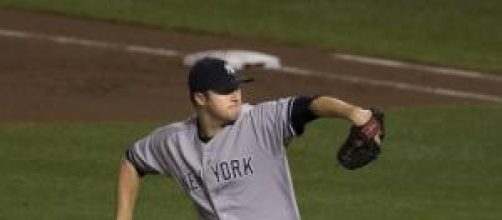The world of cricket has been deeply shocked and saddened by the news from Down Under, that the talented 25-year old left- handed Test batsman, Phil Hughes has required surgery and is now in a coma, after being struck on the head by a bouncer in a Sheffield Shield game in Sydney. He remains in a critical condition and according to Cricket Australia team doctor, Peter Brukner, no further update is likely until Wednesday. The game itself was abandoned after the seriousness of the injury to Hughes became apparent, with reports suggesting that he had required mouth-to-mouth treatment at pitchside before being transported to hospital.
Hughes, who was hopeful of regaining his place in Australia's Test team to play India next month, had been playing a fine innings for South Australia in the match at the SCG and had passed his half century when he received a bouncer from New South Wales' paceman, Sean Abbott. The ball missed his protective helmet and struck him on the back of the head, causing him to collapse to the ground. He was eventually taken to St Vincent's hospital in Sydney where he underwent surgery and was put into an induced coma.
The 22-year old Abbott is himself an Australian international, following his debut last month, and has received support from fellow cricketers as he like everyone else is coming to terms with what happened.
There have been assurances from both Cricket Australia and the Australian Cricketers' Association in the aftermath, that all those playing in the game will have appropriate counselling made available to them.
Cricket commentators, players and former heroes of the sport have shown their support for Hughes with many taking to Twitter, such as Shane Warne, Glenn McGrath and David Warner (who was playing in the match at the time of the sickening incident).
England captain Alastair Cook added his own best wishes from Sri Lanka, where his side are to play a one-day series soon.
There have been cautionary words from some, such as TMS commentator Jonathan Agnew, to not seek to outlaw the bouncer as a legitimate delivery. He still believes that it should be available for bowlers to use, despite a number of similar incidents in recent months where batsmen have been hit in the face or head by bouncers.
England's Stuart Broad was hit in the face by a bouncer in the series this summer against India by Varon Aaron, which led to bloody scenes on the television coverage as a result of a cut to his nose. There were similarly shocking images after Somerset's Craig Kieswetter suffered a broken nose and fractured cheek bone in a county match against Northants last July, when a ball hit him through his helmet's visor.
Helmets were not widely used in cricket until the 1970s, with the World Series Cricket and especially Dennis Amiss being the flag bearer for their adoption. At the time there were some who thought that they encouraged bowlers to ball bouncers, believing that the batsman was protected against the worst of any damage that could be inflicted by a hit to the head.
These days they are commonplace but it is recognised that they do not eliminate all head injuries, although they do reduce them somewhat. Incidents such as that involving Hughes are thankfully quite rare but do happen from time to time, as do serious injuries in many sports where there is a danger element such as boxing and motor racing. There are new helmets to be brought in for next season's county cricket in England, as safety standards are to be raised, but even then the risks will still remain to some degree.

